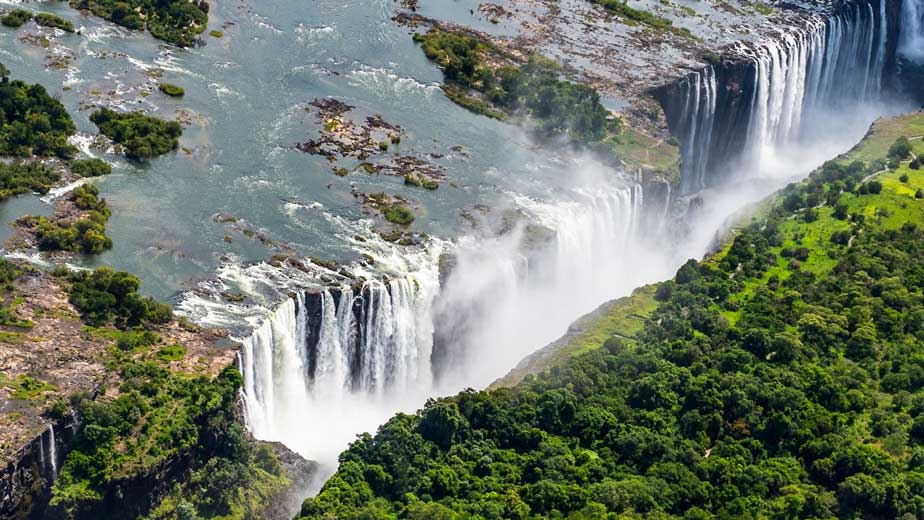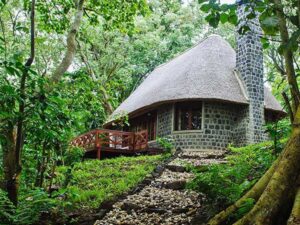Table of Contents
Welcome to a land where every corner whispers a tale of wonder and each destination promises a thrill. You’re not just any traveler; you’re an explorer ready to dive into the heart of the wild and the cradle of humanity.
Now, think about the magic that awaits. Picture yourself at the Serengeti, where the great wildebeest migration turns the landscape into a living, breathing spectacle. Or perhaps you’re more inclined to climb? Mount Kilimanjaro stands tall, daring you to conquer its snowy peak, with every step a testament to your adventurous spirit.
But wait, there’s more! The beaches of Zanzibar stretch out like golden ribbons, inviting you to bask under the sun and dip into turquoise waters that redefine paradise. History buff? Lamu Island transports you back in time with its ancient Swahili culture and winding streets that seem to have secrets at every turn.
Ever fancy a breakfast with giraffes? At Giraffe Manor in Nairobi, it’s not just possible—it’s a daily routine. These gentle giants poke its heads through windows, adding a touch of whimsy to your morning toast. And then there’s the thrill of tracking gorillas in Volcanoes National Park, Rwanda. Imagine coming face-to-face with these majestic creatures—your heart pounding, your camera clicking, and your Instagram exploding with envy-inducing posts.
East Africa isn’t just a destination; it’s a feeling, a rush, and an endless series of “Wow!” moments. So pack your bags, grab your sense of adventure, and dive into the wild, the historic, and the breathtaking. Are you ready for the journey of a lifetime? Believe it, you won’t regret it.
1. Maasai Mara National Reserve, Kenya
2. Omo River Region, Ethiopia
3. Volcanoes National Park, Rwanda
4. Zanzibar Island, Tanzania
5. Serengeti National Park, Tanzania
Overview of the Best Tourist Destinations in East Africa
How to Choose the Best Tourist Destinations in East Africa
Pros and Cons of the Best Tourist Destinations in East Africa
What to Watch Out For
Pro Tip
Recap
1. Maasai Mara National Reserve, Kenya
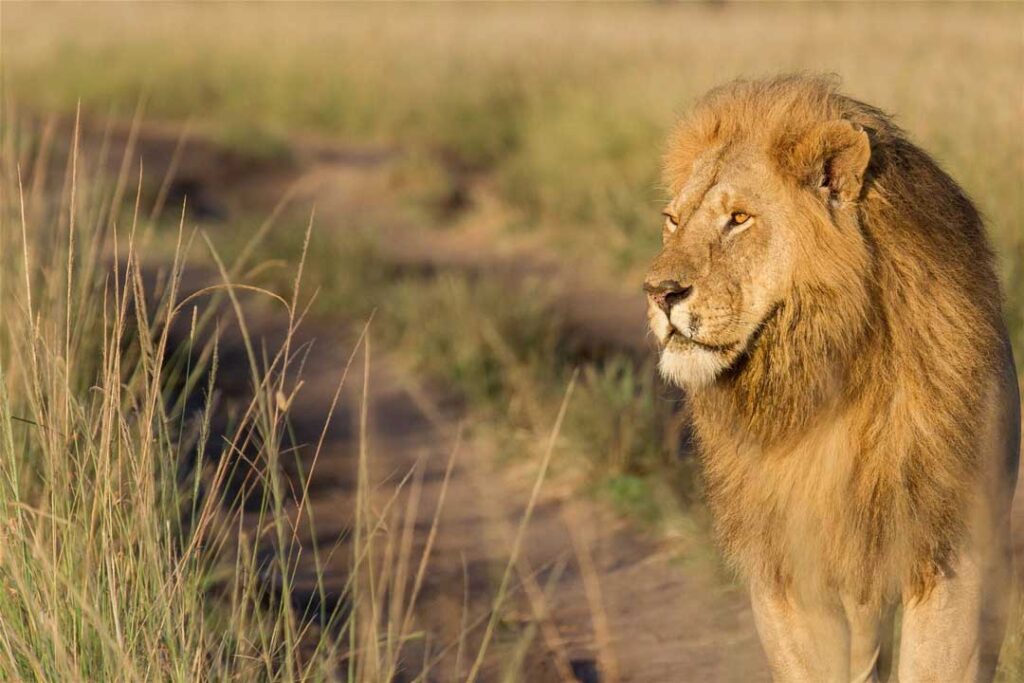
Known for rewarding safaris and abundant wildlife sightings, including the Big Five.
Witness over 2 million zebras, gazelles, and wildebeest on its epic journey from Serengeti to the Mara from July to November.
- Experience thrilling wildlife encounters with the Big Five and witness the Great Migration.
- Enjoy breathtaking landscapes of vast savannahs and rolling hills.
- Immerse yourself in Maasai culture through cultural visits and interactions.
- Photograph stunning wildlife and scenery, ideal for photography enthusiasts.
- Stay in luxurious lodges or tented camps offering exclusive safari experiences.
- Crowds during peak tourist seasons can detract from the wilderness experience.
- High park fees compared to other reserves in Kenya.
- Limited off-road driving opportunities, restricting wildlife viewing angles.
- Weather can be unpredictable, affecting safari experiences.
- Accessibility may require internal flights or long drives from major cities.
- Located in the far southwest of Kenya, within the Great Rift Valley.
- Boasts abundant big game, including populations of lion, leopard, cheetah, and African bush elephant.
- Hosts the Great Migration, where millions of wildebeest, zebras, and antelope cross the Mara River in search of fresh grass, followed by hungry predators like lions, leopards, and crocodiles.
- Offers spectacular landscapes, with rolling plains, acacia woodlands, and riverine forests.
- Learn about the culture and traditions of the Maasai people, who live in harmony with the wildlife and the land.
- Allows you to choose from luxury lodges, tented camps, or budget campsites to experience the magic of the African night sky.
- Offers exceptional game viewing opportunities year-round, with predators like cheetahs and leopards in abundance.
2. Omo River Region, Ethiopia
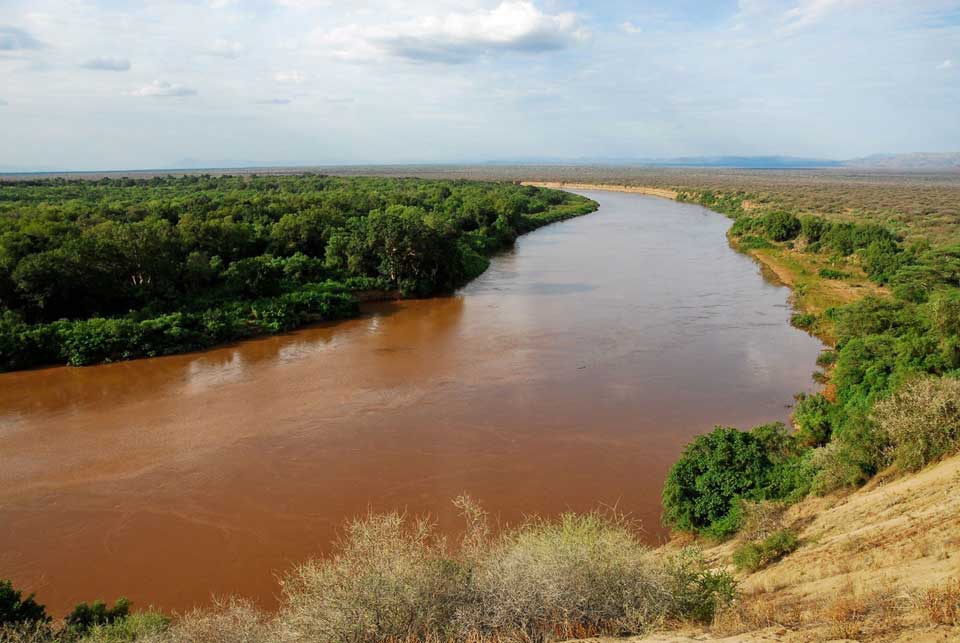
Choose the Omo River Region for its unparalleled cultural immersion with diverse indigenous tribes like the Mursi, Hamar, and Karo. Witness ancient traditions and ceremonies unchanged for centuries amidst stunning landscapes. Capture vibrant cultural expressions through photography and gain insights into Ethiopia’s rich historical tapestry. Despite challenges in infrastructure and health considerations, the Omo River promises an authentic and transformative experience if you are seeking cultural exploration in East Africa.
- Experience rich cultural diversity with indigenous tribes.
- Explore stunning and diverse landscapes along the Omo River.
- Witness the traditional ceremonies and rituals of local tribes.
- Photograph unique and colorful traditional attire and body art.
- Learn about ancient history through archaeological discoveries.
- Navigate challenges with limited infrastructure and amenities.
- Face potential health risks due to remote and rural settings.
- Encounter language barriers with local tribes.
- Manage cultural sensitivities when interacting with communities.
- Adapt to seasonal variations affecting travel conditions and river levels.
- The Omo River rises on the Ethiopian Plateau.
- Flows southward for approximately 400 miles (644 km).
- The river empties into the northern end of Lake Turkana, which lies on the border with Kenya.
- The lower Omo Valley is rich in wildlife.
- Famous for its early hominid fossils and archaeological findings, it was included on the UNESCO World Heritage List in 1980.
- Features stunning landscapes ranging from lush riverbanks to semi-arid savannahs and rugged mountains.
- Offers opportunities for cultural experiences, including witnessing traditional ceremonies, body painting, and local festivals.
3. Volcanoes National Park, Rwanda

Nestled in the Virunga Mountains, home to critically endangered mountain gorillas.
Share an unforgettable moment with these amazing animals in their natural habitat.
- Track endangered mountain gorillas in their natural habitat.
- Experience thrilling gorilla trekking adventures.
- Explore diverse ecosystems and volcanic landscapes.
- Discover rare golden monkeys and other wildlife.
- Support conservation efforts through tourism.
- Has limited availability of gorilla trekking permits.
- High cost of permits and accommodations.
- Challenges with steep and rugged terrain.
- Weather variability is affecting trekking conditions.
- Cultural sensitivity is required during interactions with gorillas and local communities.
- Situated in northwestern Rwanda, the park covers 160 km2 (62 sq mi) of lush rainforest.
- Encompasses five of the eight volcanoes in the Virunga Mountains: Karisimbi, Bisoke, Muhabura, Gahinga, and Sabyinyo.
- It’s Africa’s first national park, established in 1925 to protect gorillas from poachers.
- Offers other activities besides gorilla trekking, such as golden monkey trekking, bird watching, and hikes to the volcanic craters.
- Managed by the Rwanda Development Board (RDB), which oversees tourism operations, conservation efforts, and community development initiatives.
4. Zanzibar Island, Tanzania

Consider Zanzibar Island for its idyllic white sandy beaches, crystal-clear turquoise waters, and vibrant coral reefs, ideal for snorkeling and diving. Explore Stone Town’s UNESCO World Heritage Site with its rich history and cultural diversity. Indulge in Swahili cuisine, spice tours, and traditional dhow cruises. With its perfect blend of relaxation, culture, and adventure, Zanzibar promises a truly enchanting East African island experience.
- Enjoy pristine beaches and clear turquoise waters.
- Explore historical sites in Stone Town, a UNESCO World Heritage Site.
- Indulge in diverse Swahili cuisine and spice tours.
- Experience vibrant culture and friendly local hospitality.
- Engage in watersports like snorkeling and diving on stunning coral reefs.
- High tourist crowds, especially during peak seasons.
- Humid tropical climate with occasional rainfall.
- Potential for sunburn and dehydration; sunscreen and hydration are essential.
- Has limited public transportation, and some areas may require taxis or private transfers.
- Bargain wisely in local markets to avoid overpaying tourist rates.
- Forms part of the Zanzibar Archipelago, which includes many small islands and two large ones: Unguja (commonly referred to as Zanzibar) and Pemba.
- Enjoy crystal-clear turquoise-blue waters, shallow sandbars perfect for wading, and nearly deserted islands waiting to be explored.
- Explore the World Heritage Site of Stone Town, the old quarter of Zanzibar City.
- Hop from beach to beach between tiny fishing villages, each one more captivating than the last.
- Discover the roots of Zanzibar’s spice trade and indulge in a blend of traditional and seafood delights.
- Offers a range of accommodations from luxury resorts to budget-friendly guesthouses, catering to various preferences and budgets.
- Hosts various cultural festivals and events throughout the year, celebrating music, dance, and traditional rituals.
- Provides opportunities for eco-tourism, including visits to marine conservation areas and turtle sanctuaries.
- Requires a tourist visa for most international visitors, which can be obtained upon arrival at the airport or online prior to travel.
PRO TIPS >>> Best Tourist Destinations in East Africa
5. Serengeti National Park, Tanzania
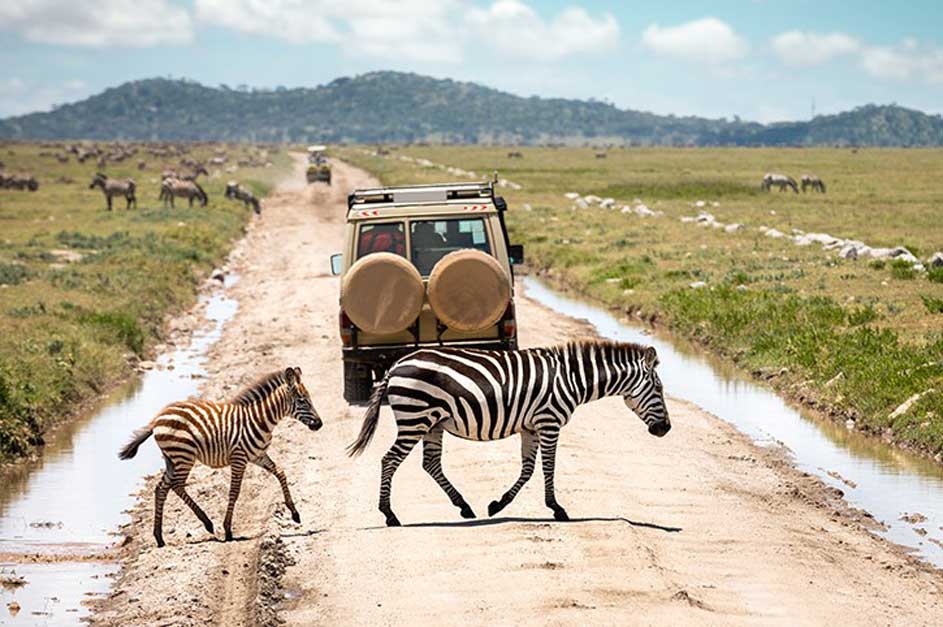
Serengeti National Park is famous for its vast savannahs and the Great Migration of wildebeests and zebras. Witness thrilling predator-prey interactions and stunning sunsets.
- Witness the iconic Great Migration of wildebeests and zebras.
- Experience unparalleled wildlife viewing throughout the year.
- Explore vast savannahs and diverse ecosystems.
- Photograph the “Big Five” and other exotic wildlife species.
- Enjoy hot-air balloon safaris for breathtaking aerial views.
- Crowded during peak tourist seasons.
- Long distances between sightings due to the park’s vast size.
- Limited accommodation options inside the park.
- Potential health risks from malaria and other tropical diseases.
- Challenges with accessibility and road conditions, especially during rainy seasons.
- Established in 1952, making it a relatively young but iconic wildlife reserve.
- Witness the awe-inspiring Great Migration of wildebeests and zebras. This annual spectacle involves millions of animals crossing the plains in search of fresh grazing grounds.
- Boasts an impressive resident population of lions, cheetahs, elephants, giraffes, and various bird species. Additionally, there are nearly 1,300,000 wildebeests, 60,000 zebras, and 150,000 gazelles.
- Covering 5,700 square miles (14,763 square km), the park features some of Africa’s best grassland range and extensive acacia woodland savanna.
Overview of the Best Tourist Destinations in East Africa
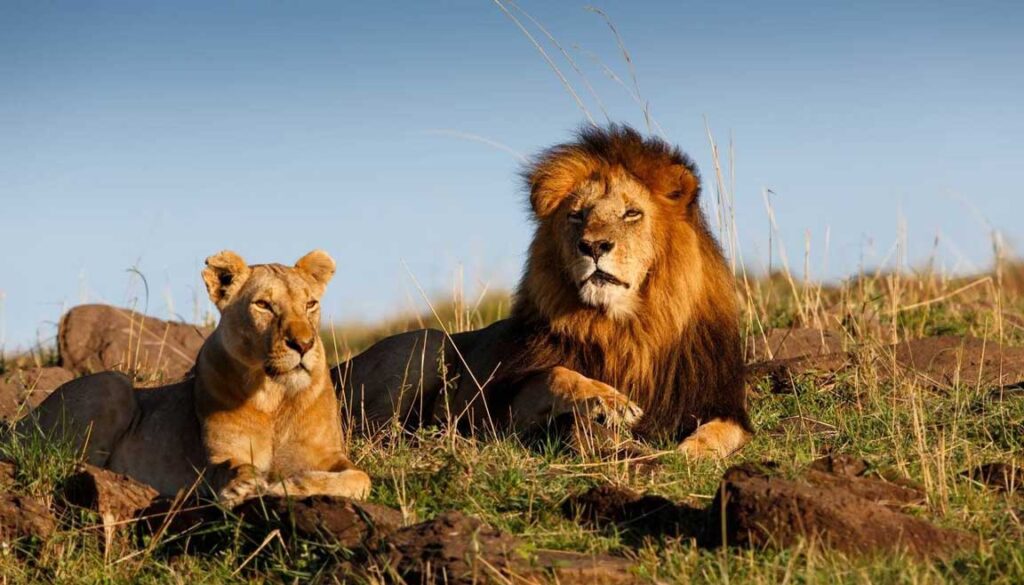
This is East Africa, where every turn brings a new adventure and a landscape that takes your breath away. The Maasai Mara is a must-see, especially during the Great Migration. Think of the millions of wildebeest and zebras moving in a synchronized dance across the plains—it’s nature’s most dramatic performance. And then there’s the enchanting Diani Beach, with its powdery white sand and crystal-clear waters. You can relax under the swaying palm trees or dive into the vibrant coral reefs.
Mount Kilimanjaro dominates the horizon, calling out to your inner adventurer. Imagine the thrill of reaching Africa’s highest peak and looking out over the continent from the Roof of Africa. Then there’s the Serengeti, where you can witness the raw power and beauty of nature up close. Lions lounging in the sun, elephants marching across the savannah—every moment is a snapshot of wild Africa.
And don’t forget Rwanda, the land of a thousand hills. Volcanoes National Park is where you can trek to see more mountain gorillas and marvel at the lush, volcanic landscapes. Kigali, the capital, is a vibrant city with a rich history and a burgeoning arts scene, perfect for immersing yourself in the local culture.
East Africa is a tapestry of stunning landscapes and unforgettable experiences. Whether you’re climbing mountains, exploring wildlife-rich plains, or relaxing on pristine beaches, every destination offers something unique.
How to Choose the Best Tourist Destinations in East Africa
Choosing the best tourist destinations in East Africa can be both exciting and overwhelming, given the region’s rich diversity and countless attractions.
- Wildlife and Safaris: If you’re passionate about wildlife, consider destinations like Maasai Mara in Kenya, Serengeti National Park in Tanzania, and Bwindi Impenetrable Forest in Uganda.
- Adventure and Hiking: For adventure seekers, Mount Kilimanjaro in Tanzania and Mount Kenya offer challenging hikes with stunning views.
- Beaches and Relaxation: Coastal regions like Zanzibar in Tanzania and Diani Beach in Kenya provide beautiful beaches and relaxing atmospheres.
- Cultural Experiences: Cities like Nairobi, Dar es Salaam, and Kigali offer vibrant cultural scenes, including museums, markets, and local cuisine.
GET SMARTER >>> Best Snorkeling and Diving Trips in Africa
Pros and Cons of the Best Tourist Destinations in East Africa
Pros
- Encounter diverse and abundant wildlife in national parks and reserves.
- Witness the dramatic Great Migration in Maasai Mara and Serengeti.
- Experience vibrant local cultures and traditions.
- Enjoy breathtaking landscapes, from savannahs to mountains.
- Trek to Mount Kilimanjaro and Mount Kenya for thrilling adventures.
- Relax on beautiful beaches in Zanzibar and Mombasa.
- Trekking to see mountain gorillas in Uganda and Rwanda.
- Explore diverse birdlife across various habitats.
- Visit historical sites like Zanzibar’s Stone Town and Kenya’s Lamu Island.
- Enjoy a generally warm climate year-round.
Cons
- High costs for flights, safaris, and accommodations.
- There are varied and sometimes complex visa requirements.
- Potential health risks like malaria and yellow fever.
- Inconsistent infrastructure and road conditions.
- There are variable safety and security conditions in some areas.
- Popular sites can be crowded during peak seasons.
- High park and conservation fees.
- There is a need for cultural sensitivity and respectful behavior.
What to Watch Out For
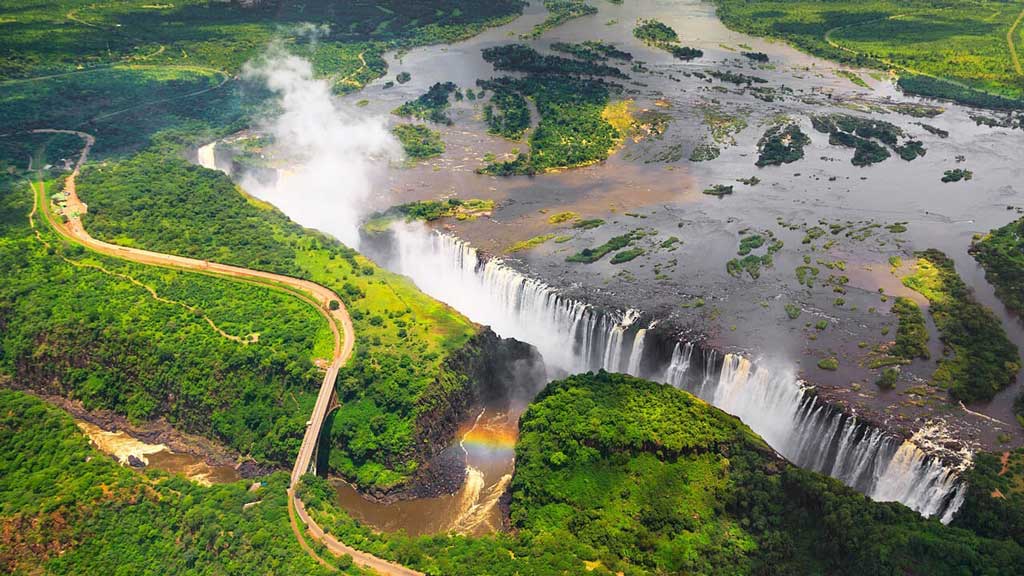
- Research the best times to visit each destination. For instance, the Great Migration in the Serengeti and Maasai Mara typically occurs between July and October.
- Consider the weather and climate. East Africa has a range of climates, from tropical coasts to cooler highlands. Make sure your visit aligns with the best weather for your activities.
- Determine your budget and look for destinations that fit within it. Some places might be more expensive due to their exclusivity or the activities they offer.
- Consider accommodation options, from luxury lodges and boutique hotels to budget-friendly hostels and campsites.
- Check the accessibility of each destination. Some areas might require internal flights, long drives, or guided tours.
- Ensure you have the necessary visas and vaccinations for each country you plan to visit.
- Look for travel blogs, forums, and review sites for first-hand accounts and tips.
- Ask friends or family who have traveled to East Africa for their recommendations.
- Research any health advisories and make sure you have appropriate travel insurance.
- Stay updated on any travel advisories or safety concerns in the region.
- If time and budget allow, consider visiting multiple destinations. Combining a safari with some beach time or a cultural city tour can give you a well-rounded experience of East Africa.
- Sometimes, working with a travel agency that specializes in East African travel can provide you with expert guidance and tailored itineraries.
Pro Tips
- Plan your trip during the dry season for optimal wildlife viewing.
- Book accommodations and safaris well in advance, especially during peak seasons.
- Hire local guides to enhance your experience with their expert knowledge.
- Pack light, breathable clothing suitable for various climates.
- Carry a good camera and binoculars for capturing wildlife moments.
- Research visa requirements and get the necessary vaccinations beforehand.
- Respect local customs and traditions to ensure a positive cultural experience.
- Use reliable transportation options, and consider internal flights for long distances.
- Stay hydrated and protect yourself from the sun with hats and sunscreen.
- Try local cuisine and visit markets to immerse yourself in the culture.
Recap
Imagine waking up to the sounds of nature, with landscapes that range from vast savannahs to dense, lush forests. You may find yourself in places where every sunrise feels like the start of a grand adventure and every sunset leaves you in awe.
This is where you are going to experience the raw power and beauty of wildlife in its natural habitats. Picture yourself watching animals in action, feeling the ground shake as herds move in unison, and marveling at the intricate dance of life around you. Trekking through the forests, you can feel a deep connection to nature, with each step bringing new discoveries and moments of pure wonder.
The mountains await, challenging you and rewarding you with views that take your breath away. As you reach new heights, the sense of achievement and the stunning panoramas may be etched in your memory forever.
East Africa is more than just a destination; it’s a place where every moment is a chance to explore, learn, and grow. Get ready for an adventure that fills your heart with joy and your mind with unforgettable memories. This journey is going to be one for the books, and you won’t want to miss a single moment.





